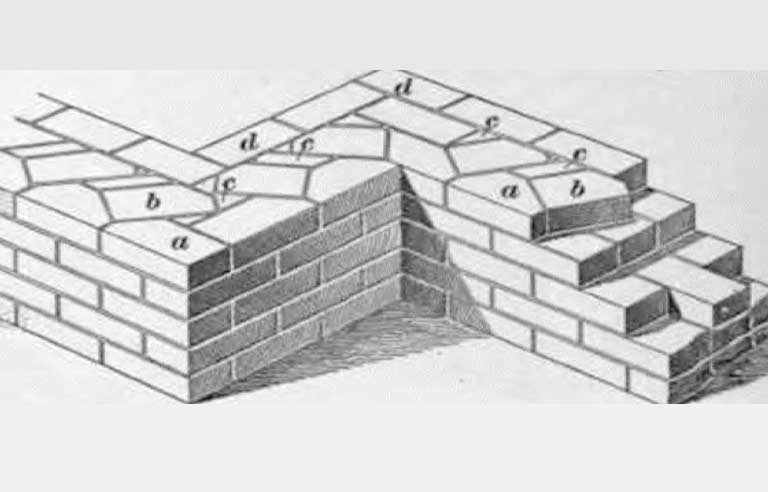NYC warns construction workers about aging brick facades

Figure 1 shows a 12-inch wall with the face brick bonded to the common brick by what is known as a diagonal, or herringbone, bond. At “a” is shown the front brick cut at the angles; “b,” the bonding brick laid diagonally; “c,” the different-shaped bats laid to form the closers of the bond brick; and “d,” the inside course of stretchers.
Illustration: New York City Department of Buildings
New York — The New York City Department of Buildings has issued a construction advisory on the dangers of aging brick facades, which could create unsafe conditions that lead to catastrophic events.
At issue, according to DOB, is the use of diagonal headers in historical construction, such as rowhouses and low-rise multiple dwellings. This type of construction was popular around the turn of the 19th century.
The headers, which typically don’t use wire ties, can deteriorate over time and lead to a full or partial collapse, putting workers and the public in danger of injuries and death.
DOB says warning signs of potential danger include:
- Loose bricks and other façade parts.
- Appearance of a gap between the backup wall and façade wall at windows.
- Cracks in brick walls and outward bulges with visible deflection.
- Occurrence of out-of-plane movement.
- Face brick that was installed without proper anchorage/tie.
If any of these signs are present, a building façade inspection should be completed by a registered design professional. Building owners should arrange for repairs immediately after the inspection under a permit from DOB.
Post a comment to this article
Safety+Health welcomes comments that promote respectful dialogue. Please stay on topic. Comments that contain personal attacks, profanity or abusive language – or those aggressively promoting products or services – will be removed. We reserve the right to determine which comments violate our comment policy. (Anonymous comments are welcome; merely skip the “name” field in the comment box. An email address is required but will not be included with your comment.)

